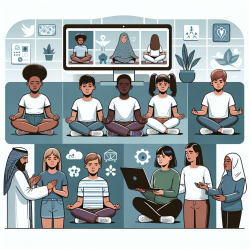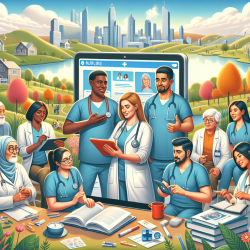Introduction
The COVID-19 pandemic has been a catalyst for change across various sectors, with education being one of the most impacted. The shift to virtual learning environments posed significant challenges for educators, particularly in the realm of science education. The research article, "The impacts of COVID-19 on K-8 science teaching and teachers," provides valuable insights into these challenges and offers a pathway for educators to enhance their teaching practices.
Understanding the Challenges
The study highlights the difficulties faced by teachers in delivering NGSS-aligned science instruction during the pandemic. Teachers reported reduced student engagement and learning, largely due to the limitations of virtual platforms. The lack of hands-on activities and the inability to facilitate group work and discussions were significant hurdles. However, the study also notes that by spring 2021, teachers had begun to adapt and improve the quality of science instruction.
Implementing Research Findings
For practitioners looking to enhance their skills, the study offers several actionable insights:
- Embrace Flexibility: Teachers who successfully engaged students during distance learning capitalized on flexible schedules, allowing students more time to explore science phenomena at their own pace.
- Utilize Familiar Materials: Using low-cost or no-cost materials that students are familiar with can help maintain engagement and facilitate hands-on learning, even in a virtual setting.
- Encourage Student Agency: Providing students with ownership of their learning environment can increase engagement and motivation. This includes allowing students to choose projects or investigations that interest them.
- Focus on Emotional Support: The pandemic has highlighted the importance of supporting students' mental and emotional health. Teachers reported an increase in providing such support, which is crucial for maintaining a conducive learning environment.
Encouraging Further Research
While the study provides a wealth of information, it also underscores the need for further research. Educators are encouraged to explore the following areas:
- Investigate long-term impacts of distance learning on science education.
- Develop and test new instructional strategies that are adaptable to both in-person and virtual environments.
- Explore the integration of digital literacy into science curricula to better prepare students for future challenges.
Conclusion
The pandemic has forced educators to rethink traditional teaching methods and adapt to new challenges. By implementing the insights from this research, teachers can improve their practice and provide high-quality science education, regardless of the learning environment. As we move forward, continued research and adaptation will be key to overcoming the challenges posed by the pandemic and enhancing science education for all students.
To read the original research paper, please follow this link: The impacts of COVID-19 on K-8 science teaching and teachers.










